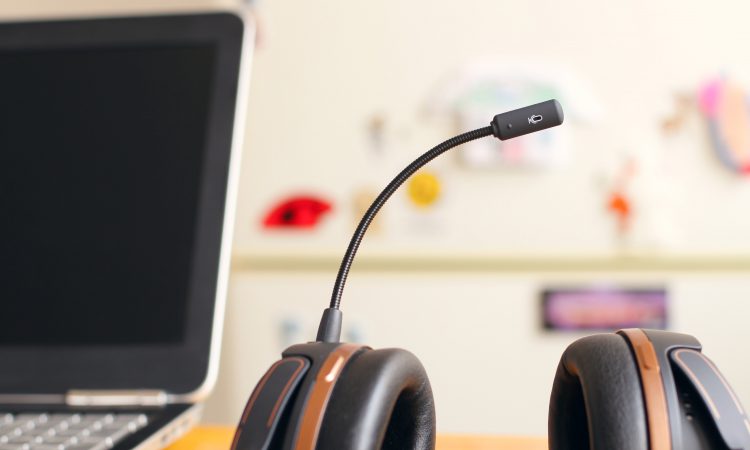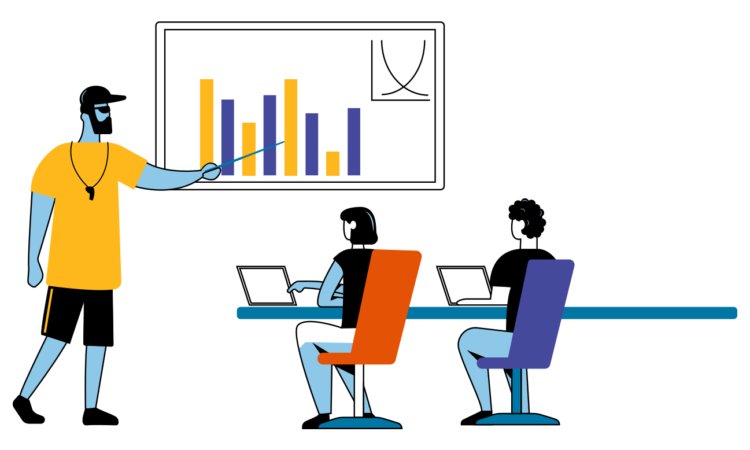
Call center technology is essential for providing high-quality customer service. Implementing the right technology boosts efficiency, productivity, and customer experience. In recent years, we have witnessed the explosion of emerging trends such as the integration of artificial intelligence and robotic automation to enhance the operation of call centers through fast and personalized service.
In this article, we will review the technologies you should be aware of so that you can stay up-to-date with the latest trends and, in turn, improve the efficiency and quality of your organization’s calls.
Tools to improve the efficiency and quality of your calls
There is a list of essential call center tools to increase agent efficiency. A call center needs to invest in both hardware and software to achieve solid performance. Without these tools, all other businesses will maintain an advantage over your company.
Call Center Hardware
You can’t have a call center without hardware. Even the earliest call centers needed phones that agents could use for incoming and outgoing calls. Let’s take a look at what these tools are today.
Computers
To establish a modern call center, you need a computer with dialing software, CRM, and note-taking capabilities. However, highly advanced computers are not required, as desktop or laptop computers with sufficient hard drive space, processing power, and a good network connection are enough for call center agents to be efficient.
Headsets
Headsets are an important tool in call centers as they allow employees to move around during their shifts, increasing their productivity. Additionally, it improves efficiency by enabling agents to multitask while on a call, such as connecting to dialing software, managing calls, searching for information, and typing without constraints. This is impossible to achieve if holding a phone to one’s ear.
PBX Switch
A PBX switch is essential in call centers as it acts as a gateway that facilitates the management of all call center tools and distributes calls to agents. It can connect to almost any type of phone and link the call center’s phones and computers to the internet, VoIP providers, and other services. Without a PBX switch, agents may sit idly waiting for their phones to ring.
Call Center Software
Adopting call center software can save time, improve accountability, and increase conversions. Technology can help enhance the customer experience in the call center in every aspect.
Automatic Call Distribution (ACD)
Automatic Call Distribution (ACD) software is a crucial tool for increasing agent efficiency in a call center. When a call comes into the center, the ACD keeps it in a queue until an agent is available. At that point, the software directs the call to the available agent’s desk. By employing ACD, you ensure that calls are handled quickly and efficiently.
Interactive Voice Response (IVR)
Interactive Voice Response (IVR) software helps reduce the number of tasks that call center agents have to perform. Instead of an agent looking up and dialing a customer’s phone number, the IVR can do it all with just the press of a button. Implementing an IVR allows agents to carry out their work quickly and accurately.
Customer Relationship Management (CRM)
Customer Relationship Management (CRM) is an essential technology for call centers that enables storing customer records and accessing important information to provide efficient service. In addition to increasing agent efficiency, a good CRM system can also help employees convert people during cold calls and personalize each interaction to improve the customer experience. Integrating CRM with the phone system and call center software allows for features such as pop-up screen, skill-based call routing, Interactive Voice Response (IVR), call queue, and queued callback.
Call Recording
Call recording in call centers is beneficial because it allows for evaluating agent performance. Additionally, these tools provide high-quality call examples that can be used to train new employees. It also creates transparency between the agent and the customer, which helps build strong relationships. Without call recording, managers cannot know what is actually happening during phone interactions and, therefore, cannot take action to improve call quality and call center performance.
Dialers
Automatic dialers are tools that automate the dialing process in call centers to increase agent efficiency and reduce downtime. There are four types of automatic dialers: preview, progressive, power, and predictive. Predictive dialers are the most efficient, as they perform tasks in an automated way and can make multiple outgoing calls at once, reducing downtime and increasing the amount of work completed each minute.
Call Analytics
Call centers can leverage metrics and analytics to gain valuable insights into their performance and make informed decisions that lead to better strategies. Analytics software allows tracking various metrics, such as call times, connection rates, conversions, and wait times. The accurate data obtained can make employees more accountable for their performance and adjust their behavior to become more effective agents.
Real-Time Reporting
Both real-time and generated reports are valuable tools for the call center, although real-time reports are more effective as they provide an up-to-date view of the center’s situation. Real-time reports allow call center professionals to adapt to incoming and outgoing call peaks and adjust their strategy accordingly. This enables them to see conversions as they occur and modify their strategy in real-time.
Customer Satisfaction
Tools for measuring customer satisfaction allow collecting information about the customer experience through surveys, feedback, and live chats. It is important to measure and work on customer satisfaction to achieve customer loyalty and company profitability.
Automatic Speech Recognition (ASR)
Speech recognition systems (ASR) are a validated and widely used technology in the day-to-day operations of call centers, relying on acoustic and language models to enable speech communication and transcription into text.
ASRs are key tools for analyzing call center calls. The process of converting audio to text allows the ASR system to generate a transcription understanding context so that these systems can interpret jargon, particular language uses, or accents, which is essential for analyzing large amounts of unstructured data.
Automatic speech recognition (ASR) technology uses machines and software to identify and process spoken language, which can be helpful for authenticating a person’s identity by their voice. However, although it has advanced significantly in recent years, this technology does not always produce perfect results, and it is common to find the word error rate (WER).
Artificial Intelligence and Machine Learning
The disruptive technology of artificial intelligence (AI) is transforming our daily lives, and the call center industry is no exception. Although some fear that AI will entirely replace agents, this is unlikely to happen in the near future due to the lack of accuracy in automated responses and the frustration it can generate in customers. Instead, AI will be used to enhance the capabilities of call center agents, increasing their efficiency and productivity.
The use of artificial intelligence (AI) in the context of the call center sector is seen as an enabler, rather than a substitute for people in the short term. While AI can be helpful for answering basic, predictable, and repetitive questions, there is still a long way to go to handle complex, high-level issues that require human intervention. Therefore, the call center agent is critical at any point of contact between the brand and the customer, and AI should support agents so they can better understand situations and make better decisions.
The use of Artificial Intelligence and Machine Learning improves call execution and analysis in the call center. Within this scope, conversational intelligence solutions help achieve greater efficiency in call center quality audits and manage conversational data massively and scalably. AI-driven technology can automatically identify call reasons and match them with other key business indicators, such as AHT or FCR, to improve efficiency and productivity in the contact center.
However, many call centers do not use AI tools due to a lack of awareness of their efficiency, budget, or compromised budget solutions, among other reasons. That said, those call centers that know how to leverage their potential will generate a competitive advantage over the rest of the call centers that do not.
Deep Learning
Deep Learning is a branch of Machine Learning that relies on artificial neural networks to process large amounts of data and learn without human intervention. In this process, input data, such as images, are analyzed layer by layer, identifying increasingly complex features. Algorithms are adjusted to improve accuracy in object or pattern identification.
Deep Learning achieves better results than other Machine Learning methods. In the case of call centers, it eliminates the need for manual labeling of input data and efficiently performs routine tasks without fluctuations in quality.
However, it also has some drawbacks, such as the need for high processing power, large amounts of input data, and more training data than other methods. Not to mention, one of the most controversial issues with Deep Learning is the opacity of the decisions made by the systems, which can be difficult for humans to understand and control.
Business Intelligence to boost the Call Center
As we have seen earlier, speech analysis technology has improved the interpretation and analysis of information, resulting in better customer service quality and performance. However, we have also pointed out that many of these solutions have limitations in terms of context, categorization, labeling, and the percentage of calls analyzed.
Optimizing operational learning is a strategy to improve agent performance in a customer service environment. This is achieved through effective measurement of silences and detection of patterns and best practices. By reducing excessive verification and analyzing customer sentiment, the customer experience can be improved.
Software like Upbe can help achieve this optimization by identifying the user’s call reason, reducing the percentage of unresolved calls, and analyzing 100% of the calls. Additionally, these software can identify common behavior patterns and respond quickly based on context and customer history. All of this ultimately leads to an improvement in the customer experience.
Enhancing the quality in a call center involves implementing various strategies and utilizing appropriate tools. Firstly, establish a comprehensive plan outlining clear goals, KPIs, and monitoring processes. Ensure all customer support channels, including phone calls, emails, live chat, and social media, are monitored consistently. Assign a team member to oversee quality and share real-time analytics with the team to identify and address issues promptly. Investing in software, such as call recording, monitoring, and performance reporting tools. Utilize successful call examples for agent training and encourage a collaborative learning environment. Lastly, reward agents for participating in the quality process to boost motivation and maintain high performance.
Here are some ways to achieve this: provide agents with clear processes and best practice guidelines for handling common issues, implement continuous training focused on customer service skills and best practices, utilize skills-based routing technology to reduce call transfers and increase first call resolution, employ live call monitoring and coaching to support new and inexperienced agents, enable inter-agent chat for real-time assistance from experienced agents or supervisors, maintain a favorable agent-to-supervisor ratio to ensure adequate support and, lastly, establish a feedback loop for agents to report broken processes and offer suggestions, fostering motivation and morale.
To become an effective and efficient call center, you have to develop the right qualities, such as effective communication skills, strong knowledge retention and recall, ability to handle pressure, speed and efficiency, creative problem-solving skills, emotional stability, empathy, organizational ability, and a team player mindset. These attributes contribute to the agents’ capacity to address diverse customer queries, maintain high customer satisfaction, and work proficiently in a high-pressure environment.
Call center effectiveness refers to the practical execution of yearly goals established by customer support centers. The primary aims for any customer service center involve eradicating inefficiencies and enhancing overall performance, which can be achieved through appropriate measures and actions.





2 Comments
Comments are closed.